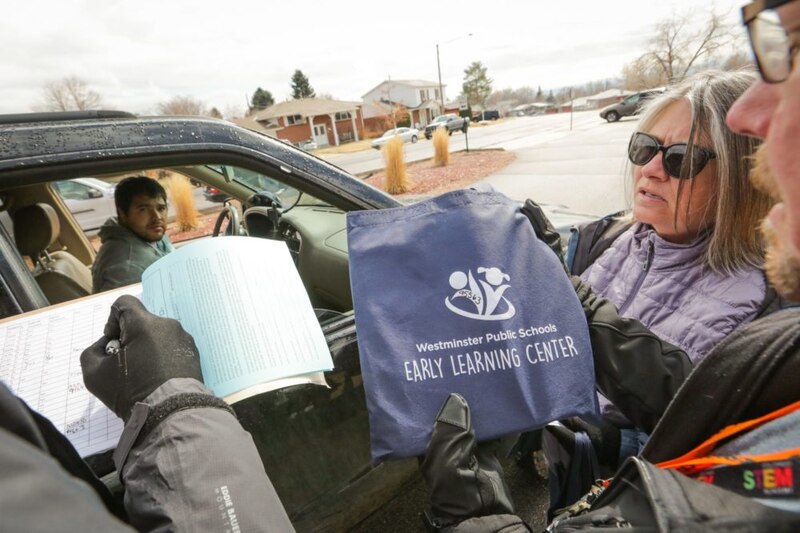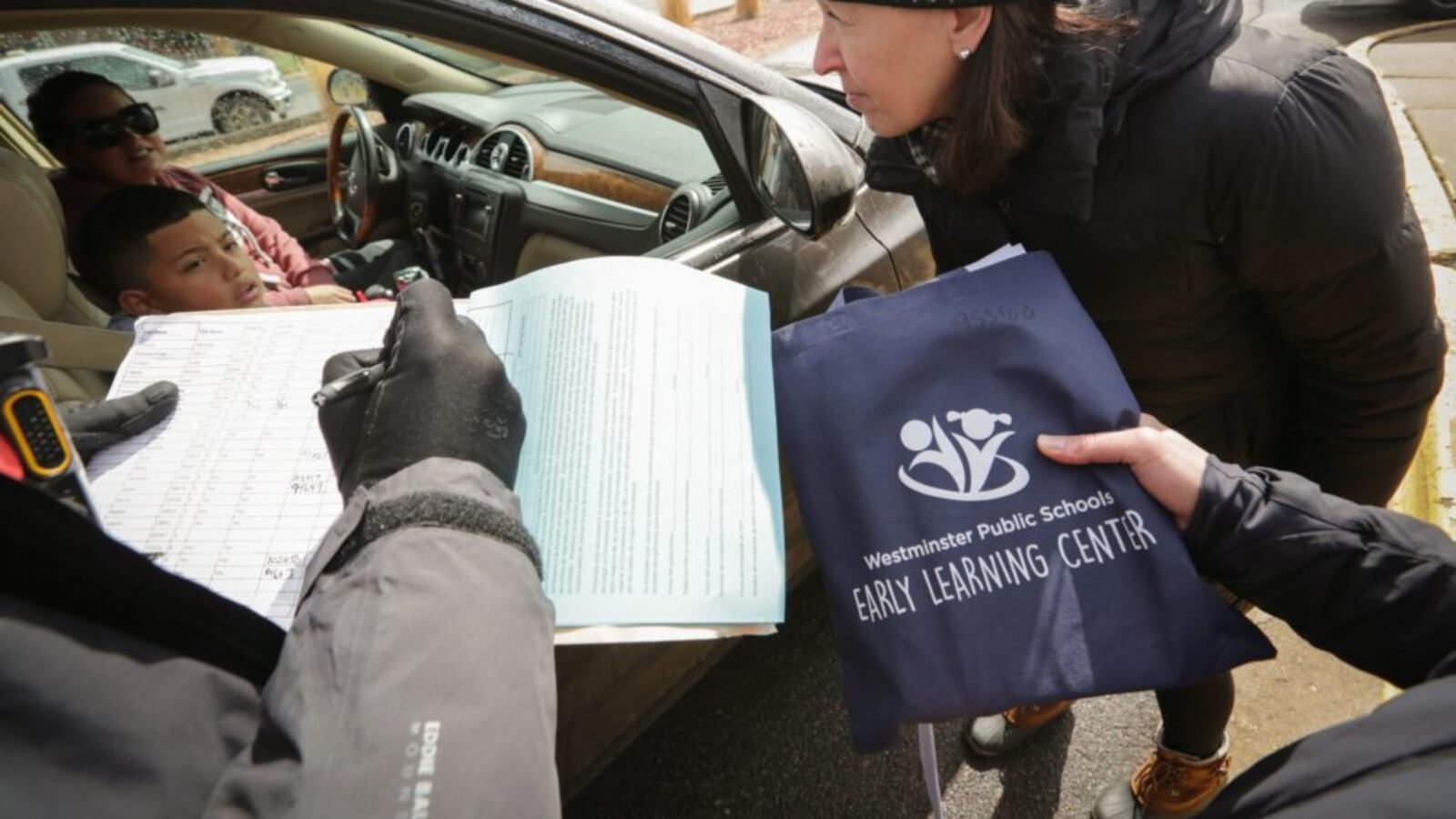When Denver Public Schools announced it would close for the next three weeks, it cast the closure as an extended spring break. That means no classes or schoolwork, even online.
In contrast, Jeffco Public Schools, Denver’s neighbor to the west and the state’s second largest district, said that its buildings would close — but classes were still on.
“Even though it’s in the midst of this public health crisis, we believe it’s an opportunity to redefine how learning can happen,” said Jason Glass, superintendent of Jeffco Public Schools. “I know we’re going to experience mistakes and things are not going to happen as we planned. This is a big and disruptive shift, so we’re asking people to extend each other some grace.”
As more than 70% of Colorado students prepare to be out of school for at least two weeks as part of a regional effort to slow the spread of the new coronavirus, school districts are taking different approaches. The decisions reflect different philosophies, as well as access to resources, and have implications for longstanding academic gaps that plague many Colorado school districts.
When federal health officials asked school districts to plan for how they might continue educating students during an extended closure, most school districts felt unprepared.
Challenges include the fact that many students don’t have access to computers or the internet in their homes. Online learning could also be a challenge for young children, or students with special needs who rely on support services in schools. School districts have a legal obligation, if they offer instruction at all, to serve all students.
And even if districts already have software they can use, teachers may still need training or help to make their lessons virtual.
As part of a joint reporting project to better understand the impact of the new coronavirus on schools, Chalkbeat and CPR News surveyed nearly two dozen districts about their plans.
🔗“Reach every student”
Glass said that Jeffco immediately began planning and got teacher input. Schools will create a schedule for students, but it will not require all students to be doing the same thing at once, unless a teacher wants to do a group lesson.
Students will be required to participate in activities, and Glass admitted that, especially for younger students, this will require an adult at home to help students stay on task.
The plan requires that school counselors make time to continue connecting to students. District officials are also working on ways they will deliver speech pathology and mental health services remotely to students who need them, as well as how to serve students with more severe needs.
“We intend to find a way to reach every student,” Glass said.
In contrast, the Westminster district northwest of Denver is making online learning optional, in part to avoid legal penalties for not serving all students equally. There will be no attendance, and no one will be dinged for not participating.
On Friday, families pulled up to a station at Sherrelwood Elementary to pick up Chromebooks and paper copies of schoolwork to use during the break. They also got information about low-cost internet options.
Oliver Grenham, chief education officer of Westminster Public Schools, said students probably will miss in-person check-ins with teachers, but the district’s competency-based model, in which students move ahead only when they’ve mastered material, has given students practice in motivating themselves.
“We don’t want to hold kids back because of something happening that is beyond our control and beyond their control,” he said.

🔗Halfway there
Many districts have some ability to offer remote learning, though they are still working out details.
“It is tricky and we are still trying to figure out how we could educate a large number of students remotely,” said Theresa Myers, a spokeswoman for the Greeley-Evans school district in northern Colorado. “We can get the students devices. The issue is in our community, many families don’t have access to Wi-Fi in their homes. We are looking into possible solutions for this, but we don’t have one as of yet.”
School District Academy 20 in Colorado Springs already uses an online-learning tool called Schoology, but not in its elementary schools. Rolling that out quickly is a challenge, a spokesperson said.
In Aurora, where 74% of students qualify for subsidized lunches, a measure of poverty, officials said that the district has several online resources that students and teachers could use for remote learning and is working with vendors to scale those up.
The district also may allow students to check out computers and will develop a course for teachers on how to maintain quality in online instruction. When the Aurora district announced its closure Thursday, it told families to watch for updates soon on how to “access to online education resources.”
🔗Spring break for weeks
Aspen Public Schools, on the other hand, decided to do no online learning next week, in the lead up to spring break. Kay Erickson, a kindergarten teacher and president of the Aspen Education Association, pushed hard for a “mental health week” for teachers and families. The surrounding county has among the highest number of confirmed cases of COVID-19 in the state, yet the schools were among the last to close. It’s been very stressful, Erickson said.
And even though many families there are well-off, those that aren’t might only have computer access at work, if at all.
But Erickson said many families are eager to make sure their children don’t fall behind.
“All the parent-teacher conferences were about: Teach me how to teach my child,” she said. “This was the greatest turnout for conferences because everyone is so scared and nervous.”
Denver Public Schools is embarking on one of the longest closures in the state: three weeks, from March 16 through April 6. But a spokesperson said that because the district considers it “an extension of our spring break,” schools won’t offer remote learning.
“If we have additional school calendar changes beyond our extended spring break, we will explore equitable remote learning options for all students, including our students with disabilities and English learners,” said spokesperson Winna Maclaren.
While Denver doesn’t have a formal online learning plan, many teachers sent home lists of websites that students can use to do educational activities during the break.
But that’s not the same as teaching.
“The infrastructure to do that online isn’t easy, and there really isn’t a way to hold kids accountable for the work,” said Troy Hubbell, who teaches at Denver’s Kunsmiller Elementary School. “People also underestimate the importance of rituals and routines in teaching. Just switching to online lessons isn’t as easy as it sounds.”
Denver has dozens of independent charter schools, some of which may go a different route.
Denver’s second-largest charter network, STRIVE Prep, will offer optional “extended learning opportunities” for students who want extra lessons. The network, which has 11 schools and 3,800 students, said it is working to provide each middle and high school student with a laptop and charger. It is also surveying families to ask if they have high-speed internet at home.
“As a parent, I understand the importance of having meaningful activities for students during a long break from school,” STRIVE CEO Chris Gibbons wrote in a letter to families. “As a result, STRIVE Prep will be sharing resources for your students to use as extended learning opportunities, if interested and able. These resources are not required assignments, but opportunities for students to keep their brain sharp during the break.”
DSST, which has 15 schools and nearly 6,000 students in Denver and Aurora, will also offer optional lessons, said Heather Lamm, the network’s chief communications officer. In addition, she said staff members plan to reach out to each student once a week to check in: Do they have enough food? Do they need mental or physical health resources?
The calls, she said, are not meant to focus on academics, but rather on students’ well-being in a trying time.
Chalkbeat reporter Melanie Asmar contributed to this report.

